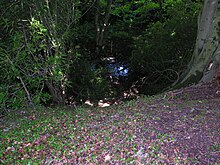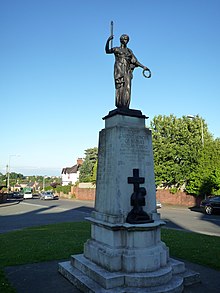Travel to Radyr Map
Radyr tourist guide map of landmarks & destinations by Walkfo
81
travel
spots
![]() When travelling to Radyr, Walkfo’s has created a travel guide & Radyr overview of Radyr’s hotels & accommodation, Radyr’s weather through the seasons & travel destinations / landmarks in Radyr. Experience a unique Radyr when you travel with Walkfo as your tour guide to Radyr map.
When travelling to Radyr, Walkfo’s has created a travel guide & Radyr overview of Radyr’s hotels & accommodation, Radyr’s weather through the seasons & travel destinations / landmarks in Radyr. Experience a unique Radyr when you travel with Walkfo as your tour guide to Radyr map.
Radyr history
Stone Age until the Norman Conquest
Radyr developed after the Norman invasion of Wales at the start of the 12th century. It formed part of the Welsh Lordship or cantref of Miskin under the Lordship of Glamorgan created by the Norman King, William Rufus, in 1093.
Origin of the name
Lifris’s Life of St Cadog mentions a croft or tref on the site called Aradur Hen. Lifris also tells the story of Tylyway, a religious hermit who was held to have lived on the banks of the Taff. The name Radyr is from the Welsh yr adur, meaning “the chantry”
Norman occupation and Middle Ages

Norman motte in the “mound field” is a flat-topped mound 30 metres (100 ft) in diameter at the base and 3.8 metres (12 ft) high. The early settlement that became Radyr developed around the Norman church and manor house in what is now Danescourt.
Mathew family

In 1469 Thomas Mathew (died 1469), the third or fourth son of Sir David Mathew of Llandaf, inherited the land by marriage to Catherine, heiress of Radyr. He built Radyr Court, a manor house on the site of what is now the Radyr Inn in Danescourt. On Thomas’ death, his lands passed to his eldest son David and then to his younger son William Mathew. His successor was Sir George Mathew, who became MP for Glamorganshire and Sheriff of Glamorgan. He had 24 children, eight of whom were illegitimate.
Stuart period
Radyr was bought by Sir Edward Lewis, who was knighted by James I. He owned St Fagans Castle and its surrounding lands, scene of the Battle of St Faggans in the English Civil War. The Lewis fortune passed to Elizabeth Lewis who married Other Windsor, 3rd Earl of Plymouth.
Development from the 18th century
Many residents of Radyr worked in the Melingriffith Tin Plate Works, on the other side of the River Taff in Whitchurch. The works opened in 1749 and closed in 1957. Until the mid 19th century Radyr was a collection of small farms, crofts and cottages. After Radyr railway station opened in 1863, the population rose from 400 to 600 in 20 years.
Wartime

In the First World War the community raised funds for a “Radyr bed” at the nearby Welsh Metropolitan Military Hospital. In the Second World War thousands of children were evacuated from metropolitan areas such as London, Birmingham and Liverpool.
Post-war history
Radyr was officially incorporated as a suburb of Cardiff in 1974. A new development, the Danescourt estate, was built on land surrounding Radyr Court and St John the Baptist parish church. Danybryn Woods, near the development, was retained as the entire forest is protected by a tree preservation order.
Radyr map & travel guide with history & landmarks to explore
Visit Radyr Walkfo Stats
With 81 travel places to explore on our Radyr travel map, Walkfo is a personalised tour guide to tell you about the places in Radyr as you travel by foot, bike, car or bus. No need for a physical travel guide book or distractions by phone screens, as our geo-cached travel content is automatically triggered on our Radyr map when you get close to a travel location (or for more detailed Radyr history from Walkfo).
| Travel Location: Travel Area: | Radyr [zonearea] | Audio spots: Physical plaques: | 81 6 | Population: | [zonesize] |
|---|
Average seasonal temperatures at zone
Tourist Guide to Radyr Map
Radyr map historic spot | Radyr map tourist destination | Radyr map plaque | Radyr map geographic feature |
| Walkfo Radyr travel map key: visit National Trust sites, Blue Plaques, English Heritage locations & top travel destinations in Radyr | |||